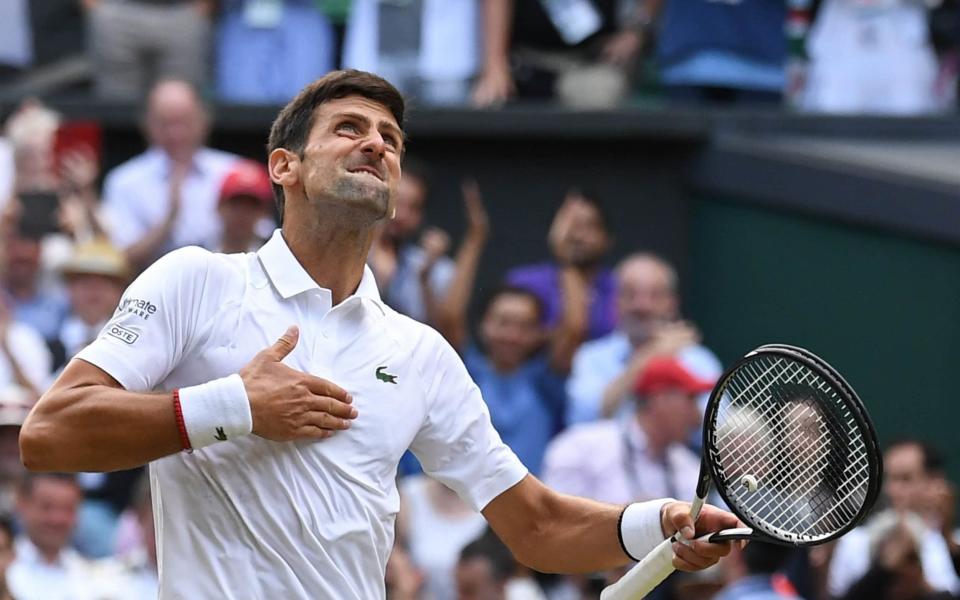Arguments between coaches and players settled with technology as tennis catches up with other sports

Tennis players are often “parting ways” with their coaches, forced to deny rumours of rifts in carefully worded statements.
Sir Andy Murray has gone through six in the last decade alone.
But advances in technology and a new focus on data analytics in tennis is strengthening these oft-fraught relationships, heralding a sea change in the way players train, experts believe.
Wim Fissette, who coached defending Wimbledon champion Angelique Kerber last year and uses the WTA’s SAP Tennis Analytics for Coaches, said that whereas many heated rows were the result of one opinion versus another, new technology meant there was now little room for dispute.
“It has changed the relationship between player and coach,” he said.
“Before we had the stats it was different. The player had the feeling and the coach had his own feeling and it was opinion vs opinion.

“But now we can look at the stats directly at the end of a match and there’s no room for dispute. we speak about fact.”
Fissette said the sport’s increasing use of analytics had completely changed a game that was traditionally focused on “feel” rather than strategy.
Craig O'Shannessy, Novak Djokovic’s strategic analyst, said tennis had lagged behind most other sports in embracing technology to create game plans but was slowly catching up.
“Historically, you go to YouTube to find a match where you can see the style of the person playing,” he said.
“Now, we see all of the data, tag them, cut the videos up and deliver them to our players so they can see their strategies and weaknesses.
“I’m seeing the influence of all the strategic work. Everybody is lifting their game. The tech companies are lifting their game.”
O'Shannessy said that until 2002, only very primitive statistics were kept but in the last two years there had been “an explosion” of intelligence, with more players and technology companies getting involved.
Roger Federer is understood to pay more than double the standard rate for exclusive access to leading agency Golden Set Analytics, run by leading economists and statisticians, who create groundbreaking computational models and software algorithms for players.
Sir Andy Murray is said to have experimented with various outfits including Lawn Tennis Association analyst Lorcan Reen, while Djokovic is thought to be the only player who employees a full time analyst.
O'Shannessy blames the deep divides within the world of tennis for the slow embracement of change.
He pointed to big team sports in the US such as Major League Baseball and the NFL which have one governing body, within which there are video and strategy departments.
“In tennis, there are three governing bodies- the ATP, ITF and WTA,” he said.
“It’s a global sport but is extremely fractured. A lot of the organisations don’t want to share information with the others.”
His concerns echoed those of Philip Brook, outgoing chairman of the All England Lawn Tennis Club, who last week expressed his desire for the various factions to work closer together, noting that “there isn’t enough goodwill in the system to figure out a way of simplifying it and making it better for tennis.”
He added: “People do their own thing acting in the best interests of whichever organisation they represent.”
Mr O’Shannessey said the other reason tennis was one of the last major sports to embrace analytics was because it was traditionally so reliant on the “feel” of a match.
He added: “Players have the worst view of a match. They don’t know what is going on and are too emotionally involved.
“There is too much emphasis on the feel rather than the pure analytics.”
Fissette agreed: “Players used to focus on feeling but I think data has become more and more important,” he said.
“You cannot only focus on feeling, you need to work with the stats. With feeling, players go back to their comfort zone and back to certain patterns in their game.
“If you analyse players well, you see the patterns very well. A match can be decided in four or five important points.
“There is more chance to win if you know what they are going to do. You need to be aware of the patterns of your own player and train more different patterns and have more variation in your game.”
He said the younger generation was used to training with this technology and would therefore be better and more accurate players.

 Yahoo News
Yahoo News 